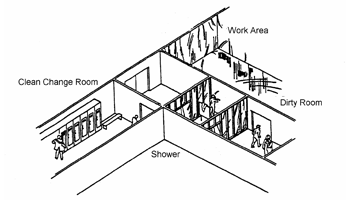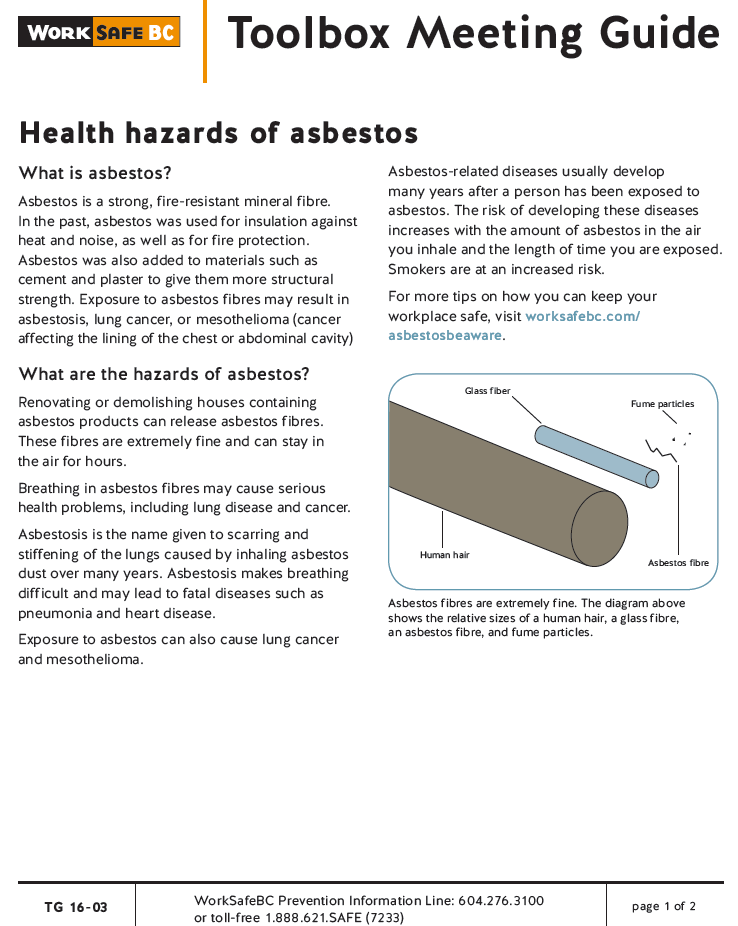9 Easy Facts About Asbestos Removal Shown
Table of ContentsSome Known Details About Asbestos Removal The Definitive Guide to Asbestos RemovalThe Facts About Asbestos Removal UncoveredEverything about Asbestos RemovalThe 25-Second Trick For Asbestos Removal

In all Type 1 operations, the spread of dust from the work area must be managed by the usage of drop sheets of polyethylene or other appropriate product, or by other procedures specified in area 14 of the Guideline. Friable ACM that is not crumbled, pulverized or powdered and that may be disrupted or removed throughout the work needs to be completely moistened before the work begins and must be kept wet throughout the work.
In Type 2 operations including the removal of all or part of a false ceiling where ACM is most likely to be on the surface area of the ceiling and the removal or disturbance of one square metre or less of friable ACM, the mechanical ventilation system serving the work area must be disabled and all openings or voids, including ventilation ducts, must be sealed (Asbestos Removal).
Asbestos Removal Fundamentals Explained
Where suitable, the spread of dust should be controlled by steps appropriate to the work, consisting of using drop sheets or other suitable material made of material that is invulnerable to asbestos When it comes to Type 2 operations involving work above an incorrect ceiling or work involving the removal or disruption of one square metre or less of friable ACM, the work location should also be surrounded by an enclosure made of polyethylene or other appropriate material impervious to asbestos, where practicable.
Glove bags serve to manage asbestos dust and waste at the source by consisting of the wetted ACM throughout the removal and by consisting of the waste - Asbestos Removal. Surface areas listed below a glove bag operation should also be covered with a drop sheet. Source: Building Safety Association of Ontario The Regulation requires that, before ACM is gotten rid of inside your home, the workspace must be enclosed and a decontamination facility set up, as described formerly.
The friable ACM needs to be completely wetted and kept wet throughout the elimination, unless this would produce a hazard or cause damage. Dust and waste should likewise be kept wet if practicable. The Guideline requires that a qualified employee check the workspace at the start of each shift, at the end of each shift, unless the next shift starts immediately, and a minimum of when on days when there are no shifts.
The Best Strategy To Use For Asbestos Removal
In some Type 3 operations, unless the structure will be demolished and will just be gotten in by asbestos reduction and demolition employees, the spread of dust from the work area must be avoided by keeping an unfavorable air pressure of 0. 02 inches of water relative to the area outside the workspace.
The pressure difference must be determined often and at routine periods and the ventilation system used to keep the negative air pressure must be inspected and preserved by a proficient worker prior to each usage. Replacement air taken from outside the enclosed location should not be polluted with any hazardous dust, vapour, smoke fume, mist or gas.
If, throughout the course of the examination, the filter is discovered to be damaged or defective, it must be replaced prior to the ventilation system is used. The ventilation system that is utilized to keep the enclosed area at negative pressure should be checked and maintained frequently by a "proficient employee" prior to each usage.
3 Simple Techniques For Asbestos Removal

If the enclosure is torn, air will leakage into, rather than out of the workspace. This minimizes the risk of asbestos contamination outside of the enclosure. The concentration of air-borne fibres in the workspace will be decreased as polluted air is filtered and tired. The blood circulation of fresh air through the workspace might help to control temperature level and relative humidity inside the enclosure, potentially enhancing employee comfort and reference decreasing the risk of extreme exposure to heat inside the enclosure. Type 3 operations that are done on non-friable ACM using power tools that are not connected to a dust-collector equipped with a HEPA filter should be carried out in enclosures, unless the work area is enclosed by walls. If the enclosure is made of non-transparent material, several transparent windows must be added to the enclosure so that the entire work area can be seen from outside the enclosure.
Entrances and exits to the workspace need to be fitted with plastic sheets on each side. If the work is done inside your home in a building that will not website here be destroyed, the location inside the enclosure should be kept at an unfavorable air pressure of 0. 02 inches of water relative to the area outside the enclosure.

The smart Trick of Asbestos Removal That Nobody is Discussing
The requirement for clearance air testing at the end of indoor Type 3 operations involving the removal of ACM that is described in paragraphs 1, 2, 3, 4, and 6 of subsection 12( 4) makes sure that workers who go into the area following the elimination are not exposed to asbestos fibers. Type 1 operations need managing the spread of dust through proper procedures consisting of using drop sheets that are resistant to asbestos.